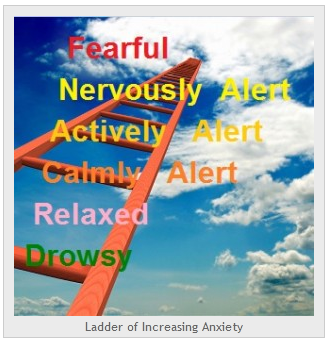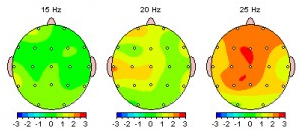Anxiety Boulder Therapy
Fear, worry, apprehension and nervousness can very well be treated with biofeedback and neurofeedback. Other training techniques are general counseling, and meditation and relaxation exercises. Breathing, and more importantly, proper breathing, is a key technique to bring an out of control mind back under control.
What Is Anxiety?
When you got to this page, you probably already know better than anyone else what anxiety is. We define anxiety as a feeling of nervousness, unease, or worry, or a combination of these feelings. Often, the source of these feelings is a real or perceived threat, or it is a situation with an uncertain outcome. Don’t worry, if you don’t know where your anxiety is coming from; most people do not know the source of their anxiety either.
Anxiety originally served an important purpose in survival. The discomfort of anxiety can serve well to alert you when something is not right and motivate you to take necessary action. For example, some anxiety about an upcoming exam can motivate a student to put in the necessary study time. However, when a person’s level of anxiety grows out of proportion, it can become debilitating and get in the way of positive action. In the example of the student, excessive anxiety might create a state of heightened physiological arousal (pounding heart, racing thoughts) which is not conducive to effective studying. This type of physical “fight or flight” reaction to a non-life or death situation can be one of the hallmarks of dysfunctional anxiety. This often occurs because a person overestimates the level of physical or psychological threat of the situation.
A Little Anxiety is Good
Anxiety can effect performance in that peak performance typically occurs with the optimal level of physiological arousal. For example, with increasing arousal, a person might go from drowsy to relaxed to calmly alert to actively alert to nervously alert to fearful. Because anxiety generally increases ones level of arousal, the anxious individual may quickly become too over-aroused to perform at his best level. To defend against this tendency, a person may also adopt an “I don’t care” attitude in which he remains too under-aroused to perform at his best level.
Overall, anxiety becomes a problem when it keeps you awake at night, prevents you from accomplishing normal tasks, or blocks you from connecting with other people. Generally speaking, anxiety becomes a problem when the movie in your head is always far more scary, than the real life reality.
Stop the Feedback Loop
Anxiety always comes with physiological symptoms, such as sweaty skin, increase heart rate, changed breathing, decreased ability to focus and so on. Both biofeedback and neurofeedback are methods which make these symptoms visible, and both allow you to observe them, and change your reaction to the underlying fear that’s causing them.
Common Types of Anxiety Disorders:
Generalized Anxiety Disorder
Panic Disorder
Phobias
Social Anxiety Disorder
Obsessive-Compulsive Disorder (OCD)
Post-traumatic Stress Disorder (PTSD)
Separation Anxiety Disorder
If you live in Boulder, Longmont, Lafayette, Broomfield, or Golden, then give us a call to see what biofeedback and neurofeedback can do for you. Go to our contact page



